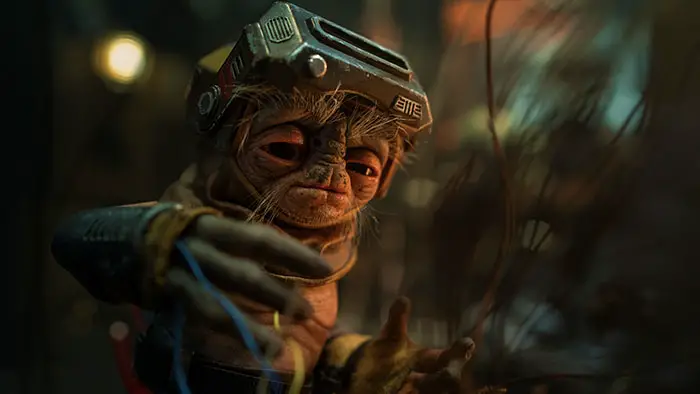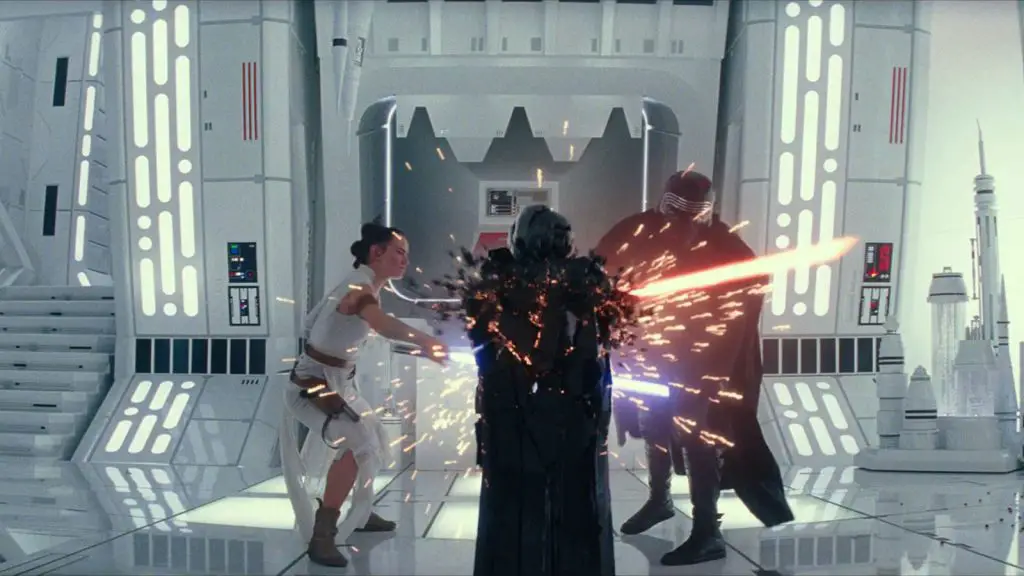
Scanlan’s own attempt to recreate that magic gave us Babu Frik, the tiny droidsmith who stole the show in the last film. The designer calls his scenes “a kind of Yoda moment, our homage to just pure puppetry, where one can just enjoy the delights of sort of so many of those kinds of communicative things that one has that relates to nothing CG, in any way, shape or form. We just wanted to entertain the audience with a great piece of theater.”

“…We just wanted to entertain the audience with a great piece of theater.”
While the goal, contrary to Lucas’ prequels, was to keep creatures as practical as possible, some interesting hybrids emerged along the way. The underground serpent healed by Rey was a full-size puppet operated by three people, and while the puppet had all the detail, a CG skin was ultimately added anyway, for a simple yet obvious reason: “In order to do the exit at the end.” Three-person puppets just can’t slither away like that.
Meanwhile, the new trilogy mainstay Maz Kanata went the opposite direction. Previously CG in two films, she became an elaborate puppet for the finale. The reasons for this are twofold: a final design had not been achieved in time to make her practically in The Force awakens, and for The Rise of Skywalker, she needed to appear in scenes with the late Carrie Fisher. “So J.J. said ‘Is there a possibility that you can do this, is there a possibility that you can bring the puppeteer in there, with the least amount of intrusion into the scene?'” says Scanlan. “‘I don’t want it to feel like there’s a crew of five puppeteers around her, because in some ways that’s defeating the purpose of what I’m trying to do.'”


